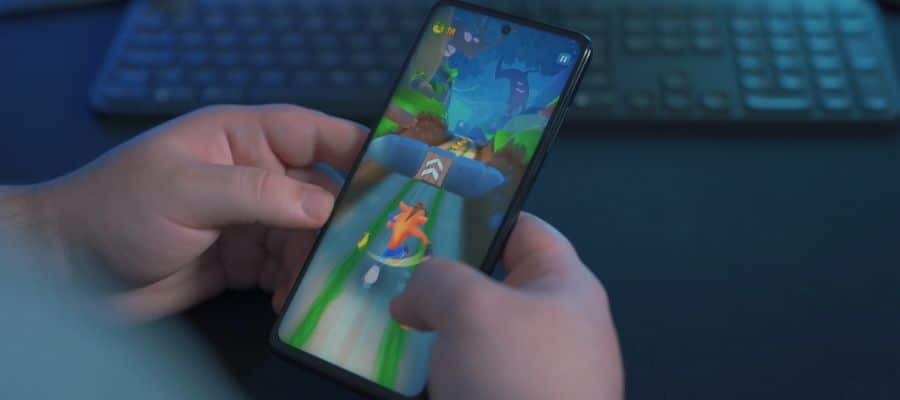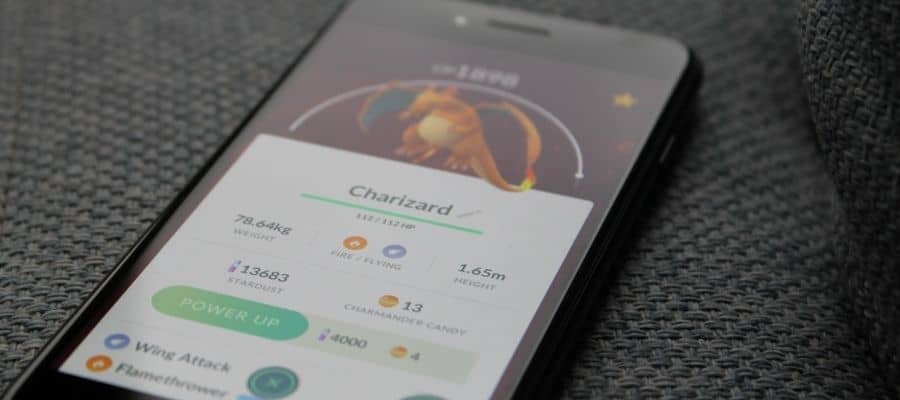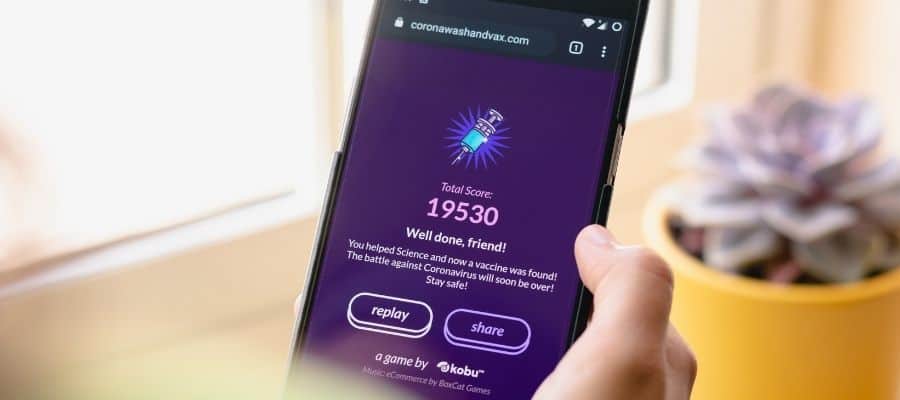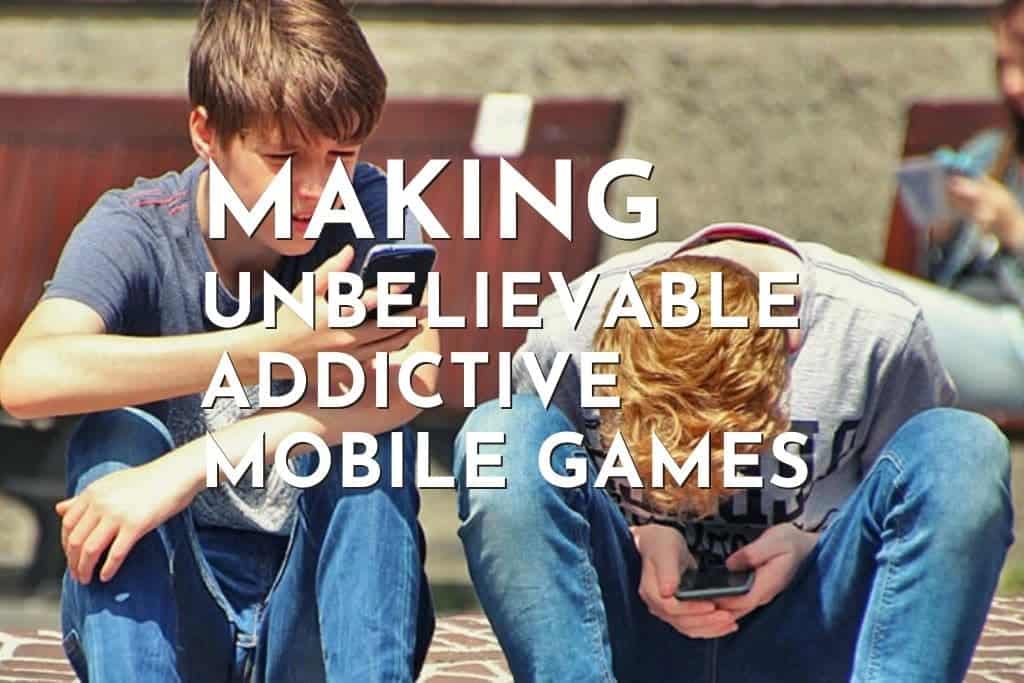Today, mobile gaming makes up half of the entire worldwide gaming revenue by itself, and people are spending insane amounts of time on their phones. With games like Candy Crush, Farmville, Minecraft, Angry Birds, etc., gaining massive popularity, it really makes you think why people sink in so much time and money into what may otherwise seem like mediocre gaming experiences. After all, these are not linear story-based AAA games with deep plots, innovative dialogue, and character development.
How come a mere mobile game is so addictive that people playing these games forget to pick up their kids from school? And we’ve even heard stories of people spending thousands of dollars on Clash of Clans. What makes these relatively simplistic games so enticing?
Well, in a single-player game, you are pretty much done once the story is over. You’ve experienced all there is to do, and the feeling of satisfaction wears off after a while. That is not the case with these mobile games. They are designed to keep you coming back daily for several years. How do they do it? Worry not because we’ve got 20 tips to help you create your very own unbelievably addictive mobile games.
Create A Hook

In the book “Hooked” released by Nir Eyal in 2014, he investigates the underlying process behind habit formation, based on our use of technology. According to his findings, there are four crucial steps required in order to make any individual repeatedly use a certain product. In our case, this product is a mobile game.
So what are the four steps? Trigger, Action, Variable Reward, and Investment (in that order). Let’s explain this cycle with a basic example. You create a puzzle game. A player will download your game. This player needs a trigger to launch your game, which is boredom.
One day during work at the office, he gets bored and launches your app. Now his boredom trigger has caused him to take action. Next, he gets a variable reward through playing your game. The satisfaction he gets by solving puzzles is incomplete because he hasn’t completed the entire game.
After his first session, a pop-up appears, prompting him to play another level and share this game on social media with friends. This is the “investment” part, where the player is now hooked and ready to invest more time and resources in your game. He might even call his friend, who will create even more investment. And as a result, he is more likely to return to your game.
Eventually, this same cycle will get triggered the next time he experienced boredom, and over time he will get addicted to the game. To successfully hook new players, you must follow 3 basic rules. Make it super easy for someone to transition between emotions (trigger) and gameplay (action).
Next, you need to ensure your reward is satisfying but not large enough for the player never to return. Basically, you don’t want to give it all at the same time. The player needs to have a reason to come back, so avoid completion in your games. Set up small goals for the player to keep chasing in hopes of achieving the end goal (completion). Finally, come up with creative ways of encouraging more time investment in your game. Incorporate customization, mini-games, retry options, etc.
Reward Your Players

In the 4- part cycle described above, the 2nd stage or “action” is crucial for generating player investment. This is the stage on which you have maximum control, and it lets you build emotional rewards. These rewards will trigger a dopamine release to keep the player attached, coming back for more.
A nice example of a mobile game with an excellent reward structure is Temple Run. In this game, you can collect gold coins and even pick up intermittent boosters that make the run easier for your character. There are two leaderboards as well to motivate you even further. One is a global leaderboard while the other one is local, containing benchmarks set for your own best achievements. And over time, the game difficulty increases, which makes it harder for you to advance. Thus, if you’re able to achieve continuous playtime, that in itself is a reward.
According to Nir Eyal’s book, there are various types of rewards. Some players are looking for social rewards, such as recognition and acceptance. Others are looking for self rewards, like mastery of skills and completion of objectives. Then, you’ve got players who are on a hunt for stuff- money, information, bonuses, etc.
To successfully keep a large audience engaged, you need to include all types of rewards with the game. Incorporate social media sharing for the social types. Use skill indicators like badges to reward the players who seek self progression. For people who are on the hunt for items, give them boosters and gold coins to collect.
Use intermittent rewards instead of regular ones. This will keep the players in constant anticipation of what’s coming next. Then this curiosity drives them to keep playing. Behavior that is reinforced sporadically at unpredictable times is more likely to stick when compared to behavior that is rewarded at regular, predictable intervals.
Build Up Player Investment Over Time

This carries over some points from our previous advice regarding rewards. As humans, we tend to collect “trophies” that show our achievements in some activity we invested plenty of time and effort into. When we expend a ton of resources in the form of time and energy, we expect something to show for it.
A lot of mobile game devs don’t understand this aspect of human behavior. The ones who do incorporate incremental difficulty in combination with rewards that get bigger over time notice their player base sticks around for longer.
Replace Existing Behaviors, Instead Of Creating New Ones

If you’ve tried out a bunch of mobile game genres- side scroller, word puzzle, platformer, eternal runner, etc., you’ve probably noticed a trend. Most games within the same genre are on some basic level similar to each other in how they play. There are, of course, subtle differences between each variant within the genre, but they all copy ideas established by the first big one.
As a developer, you must know that it is much easier to redesign the wheel than reinvent it. Make some improvements here and there, like increasing the visual fidelity so that new players have an easier time onboarding. If you download the source code from a place like SellMyApp, you have the chance to work on an existing game model and bring about little improvements.
Simplify the UI, improve the performance on certain devices, introduce better character art; there is so much to do. If you try to create a completely new genre from scratch, it will take a lot of time and isn’t likely to succeed. Build upon the success of other popular games, and this way, you’ve got a better chance of tapping into the mind of players.
Get The Pacing Right

A lot of games often struggle with their pacing, i.e., getting the right balance between accessibility and difficulty. If you create an experience that is too harsh, players will get frustrated and quit. On the other hand, you don’t want to dumb things down too much, or else they will get bored.
Near misses, teases, and delayed rewards keep players returning for more. Don’t hand over everything; instant gratification has its uses but tries to leave something for later such that players will return. It is the same concept as gambling; addicts always keep coming back thinking, “this time, I will win.” Hide rewards behind randomized systems, introduce delays when they lose all lives (like in Candy Crush), and make it seem like they are in control. It Has To Be Casual.
Addictions give us a sense of satisfaction or relief; they are not meant to be stressful. And a mobile game that requires too much focus and has complicated mechanics will not be easy to turn into an addiction. If it is emotionally or mentally draining or too “hardcore,” you are losing a large portion of your potential player base.
People will always feel the need to take a break after playing your game, which is the opposite of what you want in an addictive game. The learning curve should gradually ease you into the more difficult sections of the game. Eventually, players stop playing for fun alone and treat your game as a habit, but in order to reinforce this behavior, you must start with fun.
The Three Rules: Quality, Stability, and Visibility

In order to create an addictive mobile game, you must first create a polished mobile game. We don’t mean your mobile game has to be the best, most creative option out there. It just has to be bug-free and receive regular updates. Presentation matters; that is why you see all these casinos and slot machines using flashy lights, large fonts, easily recognizable symbols, etc.
In order to create a pattern of behavior, you must first make your game worth the player’s time. You’ve got to make a nice first impression and keep the content fresh with new updates so players will come back to play your game time and again.
Include Aggression-Release Mechanics

Ever noticed how several popular mobile games have “bombs”? Angry Birds, Candy Crush, Clash of Clans, etc., all have gameplay features that allow the player to make a giant impact for a short burst of time. This happens through various methods.
Angry Birds will give you a bird that does massive damage in an area by exploding with a loud bang. Candy Crush gives you striped candy, which can eliminate an entire row of candy while producing a bunch of particle effects that resemble fireworks.
Clash of Clans also has explosions in the form of air balloons and little skeletons that run around with bombs in hand, trying to breach enemy defenses. All these mechanics are intended to function as a stress release. You let go of pent-up aggression within the game through a single powerful move.
Looks Matter More Than You Think

The type of person who plays a casual mobile game isn’t going to be particularly excited by seeing grays and blacks as primary colors. If you’re trying to create a game that players return to, use vibrant and refreshing colors that send off a positive vibe.
You also need to make sure that the UI is simple yet intuitive so the new users don’t spend 10 minutes fumbling around with the controls. The faster people get to see the primary value of your game, the quicker their brains begin to form habits around it. Get them from the menu to the game as fast as possible, and use attractive character designs. Candy Crush takes full advantage of this point, as is evident from the shiny and attractive candy. Kids love candy and bright colors.
Ensure The Onboarding Experience Is Perfect

When your players launch the game, it needs to make an excellent first impression. Tutorials, UI, performance, etc., must be considered in order to create the perfect first-time user experience. The app store is a vast marketplace with thousands of options. And if someone doesn’t like the way your app looks, they will throw it in the trashcan before even giving it a chance. Use first-time launch bonuses, crisp visuals, and good sound design to wow your users.
Variable Rate Reinforcement

Gambling concepts found in casinos have made their way into video games, and this is one of them. The concept behind variable rate reinforcement is pretty simple- our brain is way more excited by uncertain rewards compared to predetermined ones.
Like a child on his birthday, you will be happy to receive a booster pack or unique in-game item out of nowhere. But that fixed 10 gold coins you get at the end of every level; it is taken for granted and is rather uninteresting. A random chance of getting 10X the reward is way more enticing than knowing you will get 1X.
That’s the very principle used in loot boxes by AAA devs. The reward pattern has to be somewhat regular, like a random gift every 5 days. Enough to keep players attached in the expectation of receiving something good.
Incentivize Curiosity And Exploration

What happens if you mix these two ingredients together? Will you create a new attack by pressing 2 buttons simultaneously? How many rewards are hidden inside that room over there?
Constantly encourage your players to explore and reward them with in-game bonuses. This will make them feel like there is always something new to learn each day, and they will keep returning to your game.
Relative Deprivation/Aspiration

Knowing that your colleague at work has a great job and an awesome house can make you feel slightly inadequate at times. But it is also a great motivator for you to forge ahead and succeed in life. The same concept applies to video games.
If you see another player with awesome character skins and unique weapons, you too will aspire to reach the same status, whether it be through gameplay or spending. Either option is good news for the developer.
Loss Aversion And The Illusion Of Control

Human beings are competitive by nature. Whether it is in the workplace or in the arena of an online PvP game, we hate losing. But we can’t really win all the time at everything, and we know it. Players don’t expect to roll through everything without any challenges; that would just be boring.
But the thing that makes all of this possible is stakes. If something is on the line, it makes the activity all the more worth it. In short, we like challenges. But you need to make sure the challenge is achievable and players are rewarded for it. This way, they come back the next time. You want them to experience a dopamine hit when they win but also spread out small losses over a period of time to maintain the challenge.
Compulsion Loops And Dopamine Hits

Dopamine is a chemical substance produced within our brain that is associated with feelings of euphoria, bliss, motivation, and concentration. It is released in response to our drive for learning and finding new things. Finding cool new tricks and getting rewarded for them gives us a dopamine hit, whereas failure and a lack of adventure will reduce dopamine levels.
Addictive mobile games are based around a simple gameplay loop with positive feedback at the end of the cycle. These games are simple and repetitive by design in order to generate a dopamine hit within the player. Our hunger for the next dopamine hit forces us to repeat the action, over and over.
This is known as the compulsion loop. You feel compelled to repeat the challenge provided by the game so that you can feel good at the end of it. The dopamine is triggered by receiving a reward of some sort- trophies, rankings, cosmetic items, in-game currency, etc.
Engaging The Player Subconsciously

To create a truly addictive game, you must influence your players’ minds on a subconscious level. If players can play the game for hours without even realizing how they’re doing it, you’ve got success on your hands. Example- “I need 1000 more gold to upgrade my towers, which will require another 15 minutes of gameplay”.
The player isn’t thinking about this actively, but he has played the game for so long that his subconscious mind is making decisions for him. Subconscious decisions are faster and based on emotion, making them perfect control systems to keep players hooked. It has been proven through experiments that people find a photo more attractive if the model is standing in front of a red background.
If you serve food on a blue plate, people will eat less of it compared to when the food is served on a white plate. When designing your game, test various UI elements and figure out what “feels” more addictive. Experiment with the colors, mechanics, sound, etc., and monitor user data to see which changes increase session time the most.
Give Your Players Something To Be Proud Of

Everyone arrives at a point where they are emotionally invested and treat the game as a hobby. Like with any hobby, you want to be better than the others. You feel accepted and popular when you can show your status through in-game items and badges.
Customizable skins, unique weapons, booster packs, etc., will let players show off their financial investment and loyalty to the game. They compete with other users to see who has the best stuff, and thus begins the good old internet race of “mine is bigger than yours.”
No matter the reason behind this behavior, it inevitably ends up with players investing a significant among of time and money into customizing their characters and profiles, which will make sure that they return to the game regularly in order to reap the benefits of their investment.
Over The Top Feedback

Slot machines make a whole lot of noise even when you win a small sum of money. This has two purposes. Firstly, it attracts bystander’s attention and shows them that there is a probability of winning. Secondly, it creates an exaggerated positive response to success even if the scale is small and the victory was due to luck.
Candy Crush will provide exaggerated positive reinforcement in the form of “Sweet,” “Tasty,” “Unbelievable!” etc., whenever you hit complex moves. This is often accompanied by shiny particle effects that resemble a firework celebration, vibrant colors filling up the screen to indicate positive feedback. It sounds silly from the outside, but it acts as a positive reinforcement to feed the compulsion loop for a player within the game.
Making Players Wait: Hedonic Adaptation

You ever heard of the old saying, “good things come to people who wait”? Well, in games, this mechanic can be used to create addictive patterns within players. The phenomenon is called hedonic adaptation.
In a psychological experiment, researchers took a group of people and gave them chocolate to eat during two test sessions separated by one week. One part of the group was instructed to abstain from eating chocolate during this 1 week interval, while the other group was given no restrictions. During the second session after the 1 week period, the people who had abstained from eating chocolate enjoyed it significantly more.
The group who had no restrictions showed no significant positive mood change after eating chocolate. Humans have a tendency to maintain a relatively stable level of happiness despite major positive advances in life or even negative setbacks.
Make Your Players Rely On Their Friends

In the freemium mobile farming game “Hay Day” by Supercell, you can trade resources with friends and unlock new features by inviting a minimum number of friends. The idea here is to encourage interaction between players. And, you can also make your existing players invite new ones into the game under the promise of unlocking bonuses or achievements.
Another great mechanic is allowing item trading between friends. Don’t overdo this because you might end up losing players. A small amount of interdependency is something you can experiment with, but this will also vary based on the type of game you’re creating.
Conclusion
It is impossible to predict if your game will become the next Angry Birds, but at the very least, you will be able to create an addictive experience. Other aspects of game development, such as marketing, QA testing, etc., are also important, but the first thing you need to focus on is a fun gameplay loop.
Look at the most popular games within a certain genre, and see what they do well. Gather source code for a game similar to what you’re trying to create and improve upon it. This will help you cut down on development time while still creating a unique game.
Utilize stress-reliant features, randomized rewards, daily bonuses, etc., to keep your players coming back regularly. A truly addictive game takes all the elements listed within this article and blends them seamlessly to create a ladder of rewards piled on top of each other.

